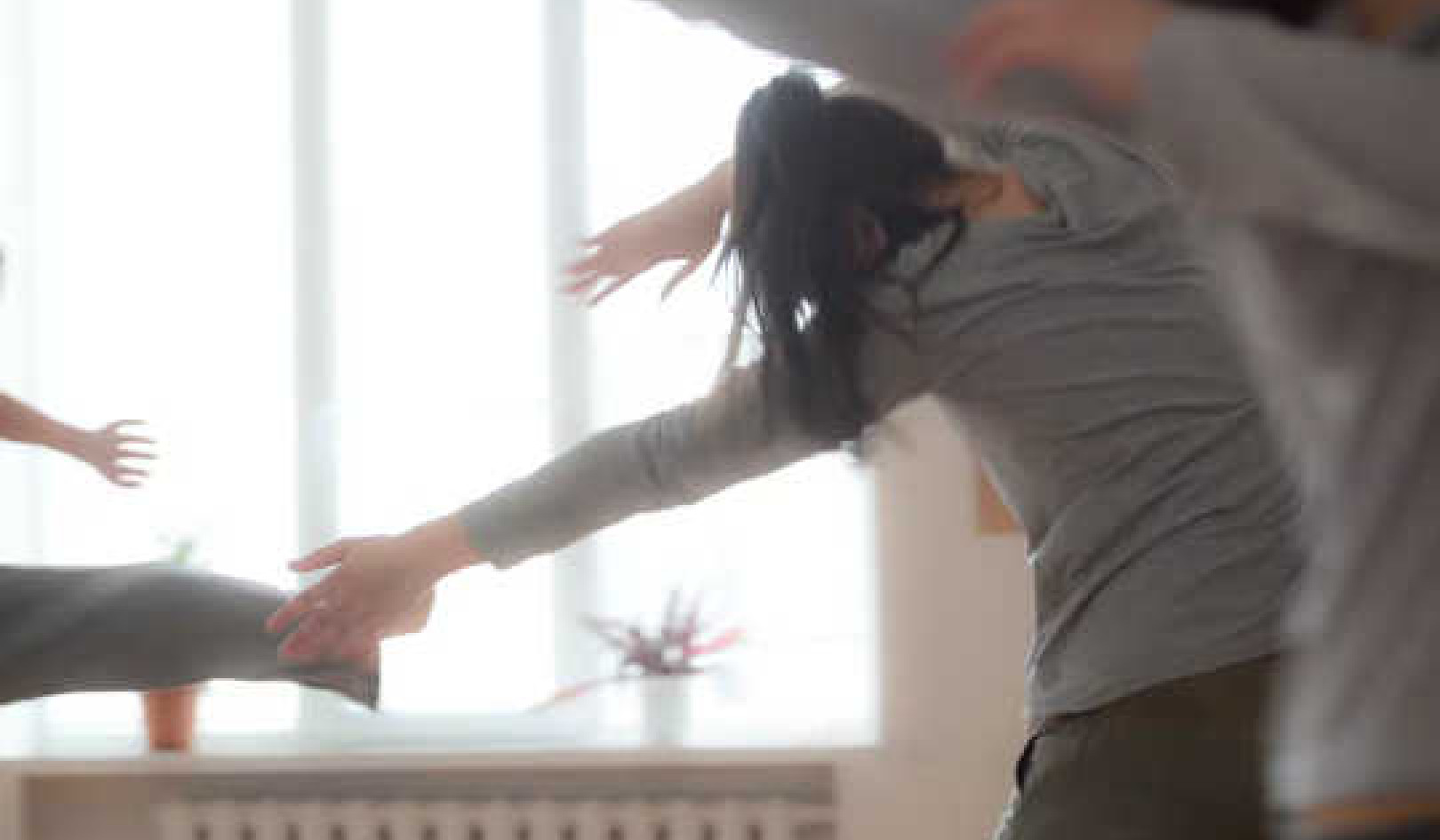
According to the results of over 1500 people who have taken the Attitude Reconstruction Survey on my website, the most dominant destructive attitude of the twelve possible core attitudes is that our attention is in the past or future. This attitude is related to the emotion of fear.
73.5% of the people surveyed said that "half the time", "often," or "most of the time" their mind is in the past or future rather than the present. Yikes! That means that almost three quarters of the folks we interact with are somewhere else and definitely not experiencing peace.
Peace is the Opposite of "Fear"
Since "peace" is the opposite of "fear" it makes sense that if you deal with the fear, peace will be nearby.
People whose most dominant emotion is fear are easy to recognize. In general, we are the "speedy ones," focused on time and money. We feel that there's never enough. We tend to be worriers - scattered, confused, overwhelmed, dramatic, panicky, or controlling. If you ask us, we will tell you that peace is something that's elusive.
6 Ways to Decrease Fear and Increase Peace
Here are six ways to easily decrease fear and increase peace, according to Attitude Reconstruction.
1. Shiver the fear out of your body rather than tightening up.
Emotions are just pure physical sensation in your body. So allow yourself to physiologically express the fear you feel rather than tightening up.
When I feel nervous, jumpy, agitated, or my mind is racing a million miles an hour, I let my body do what's natural. I vigorously shiver, shudder, and shake all over, like a dog at the veterinarian. Though it can seem weird, silly, or contrived at first to jiggle, shiver, tremble, and let my knees knock, I almost immediately feel more relaxed, centered, and able to focus.
When you can't sleep at night, need to return a scary telephone call, or make a presentation, just duck into the bathroom, shiver for just a minute or two, and remind yourself: "It's okay to feel scared. I just need to shiver." Or you can repeat, "Everything will be all right. Everything is all right." The result is almost miraculous. This one simple activity restores calm and will bring you back to the present. Give it a try!
* Click here for a video demonstration of the Shiver and Shake Process.
2. Interrupt thoughts about the future and past.
To keep things manageable and in perspective, keep bringing yourself back to the present. That's all that exists. When you wander off into the "what ifs" and ruminate about what transpired in the past, you miss out on the unique moment.
I highly recommend that, over and over, you remind yourself to focus on the now. Many times a day, repeat whichever of these phrases will be most supportive: "One thing at a time. Everything is unfolding in its own time. I'll handle the future in the future. Be here now."
3. Keep reassuring yourself.
When a child is anxious, the caretaker offers comfort and reassurances. It's an excellent strategy and one we can give to ourselves when we are worrying or overwhelmed.
Tell yourself in a soothing voice, out loud or silently, "Everything is all right" when you are freaked about what's transpiring now, and "Everything will be all right" when your attention is in the future. You can also tell yourself such things as "I can handle this."
4. Stay specific, avoid over-generalizations.
Economics, architecture, music, cooking, medicine, the law, physics, and engineering are all based on specifics, yet we were not taught to look, think, and talk in terms of specifics. We resort to global generalities, such as "always" and "never" and use sweeping labels, like "good," "bad," "stupid," and "full of baloney."
Be specific about the concerns at hand, rather than generalizing about your whole life, your relationship history, your character, the world, and so on. Bringing other unresolved issues into the specific topic you're grappling with is like putting gasoline on the barbecue. It makes reaching a satisfactory resolution nearly impossible.
When we choose to see and communicate in broad strokes we create confusion because others don't know exactly what we are thinking or talking about. Repeat, repeat, repeat, "Stay specific."
5. Break big projects into a series of simple little pieces, and attend to one thing at a time.?
The key to managing fear and life's tasks is to take the time daily to get organized. For each task you need to accomplish, start by articulating your goal. With that in mind, break the goal into a series of little doable steps. Make each step small enough so you know you can do it.
If you keep an ongoing list of exactly what needs to be done by when, you can evaluate what's most important and essential for today. Put your to-do list in an obvious place, such as by the computer so you can see it. Then just do what's next, and offer yourself copious praise for each small victory.
6. In terms of lifestyle choices, strive to establish a regular, more relaxing routine.
Get more sleep. Don't miss meals. Cut down on the coffee and energy drinks. Stay out of cold, damp, and drafty places. Reduce the amount of stimulation you expose yourself to.
You'll feel better if you spend time engaging in less frightening or anxiety-producing activities, situations, movies, or games, and more time doing relaxing things, such as gentle walks, watching sunsets, and listening to calming music.
By following just a few of these simple suggestions - take little baby steps and shiver whenever agitation comes knocking. I'm certain you'll soon find that you enjoy whatever your day brings, and you're able participate with more humor, ease, and equanimity.
©2016 by Jude Bijou, M.A., M.F.T.
All Rights Reserved.
Book by this Author
 Attitude Reconstruction: A Blueprint for Building a Better Life
Attitude Reconstruction: A Blueprint for Building a Better Life
by Jude Bijou, M.A., M.F.T.
Click here for more info and/or to order this book.
About the Author
 Jude Bijou is a licensed marriage and family therapist (MFT), an educator in Santa Barbara, California and the author of Attitude Reconstruction: A Blueprint for Building a Better Life. In 1982, Jude launched a private psychotherapy practice and started working with individuals, couples, and groups. She also began teaching communication courses through Santa Barbara City College Adult Education. Word spread about the success of Attitude Reconstruction, and it wasn’t long before Jude became a sought-after workshop and seminar leader, teaching her approach to organizations and groups. Visit her website at AttitudeReconstruction.com/
Jude Bijou is a licensed marriage and family therapist (MFT), an educator in Santa Barbara, California and the author of Attitude Reconstruction: A Blueprint for Building a Better Life. In 1982, Jude launched a private psychotherapy practice and started working with individuals, couples, and groups. She also began teaching communication courses through Santa Barbara City College Adult Education. Word spread about the success of Attitude Reconstruction, and it wasn’t long before Jude became a sought-after workshop and seminar leader, teaching her approach to organizations and groups. Visit her website at AttitudeReconstruction.com/
* Watch an interview with Jude Bijou: How to Experience More Joy, Love and Peace




























